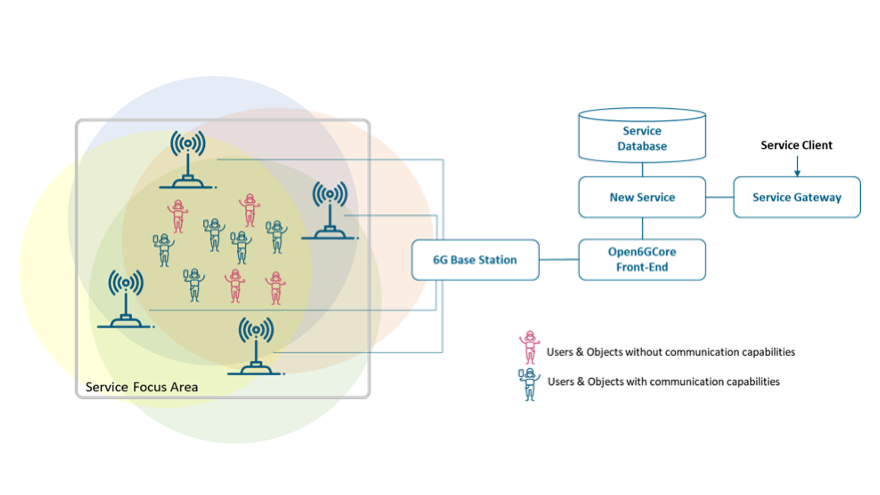We foresee 6G networks will have two new types of added value services next to communication. Alongside classic subscriber services like positioning and SMS, a new category will focus on specific network areas. Driven by “sensing” services and other area-based functions, this approach includes communication with all devices in an area. This includes the distribution of information between UEs in a region and the provision of area-based positioning data.
A preliminary, not comprehensive list of area-based services includes:
- Sensing the Wireless Environment: Utilizing 6G base stations or other sensing devices like radar or video cameras, to determine properties of the environment including communicating devices and other non-communicating environment elements
- Location of Devices in an area: Providing momentary distribution of communicating devices for environment understanding and optimization purposes
- Mobility Patterns in an Area: Tracking device movements through the selected area to optimize the local network and to determine mobility anomalies.
- Session Patterns in an Area: Analyzing radio resource usage within the area to optimize the local network and to determine usage anomalies.
- Dynamic RAN Configuration Services: Real-time adjustment of RAN parameters such as frequencies and power control.
- Broadcasting Messages: Transmitting specific messages to all communicating devices in the selected area such as emergency notifications.
- Data Aggregation from an Area: such as collecting environmental information from IoT sensors or more comprehensive environmental and usage information from phones in an area.
- Inter-UE Communication in an Area: Enabling messages from one UE to all neighbors, such as emergency stops in a factory.

To handle information from UEs and RANs, a new micro-service service collects data regularly, event-based, or on-demand. This data is processed by a server, which derives secondary information (e.g., counting people in a location) and stores it in a database. Decisions and events can be distributed by the microservice to individual or all devices in each area. These must be identified by a new area identifier, such as tracking areas.
As with current SMS and location services, a service client sends requests to a gateway for external access to the service. The gateway checks the credentials to authorize data access for a specific area. Driven by “sensing” services and other area-based functions, this approach includes communication with all devices in an area. This includes the distribution of information between UEs in a region and the provision of area-based positioning data. The gateway retrieves the requested information from the database or triggers new operations to collect data. While 5G uses the Access and Mobility Function (AMF) as the UE and RAN message front-end, the Open6GCore equivalent routes requests to the appropriate service without fully decoding them. This way new services are isolated from the other parallel services, making their integration very easy.
The area service architecture for sensing was developed as part of Open6GHub project.
